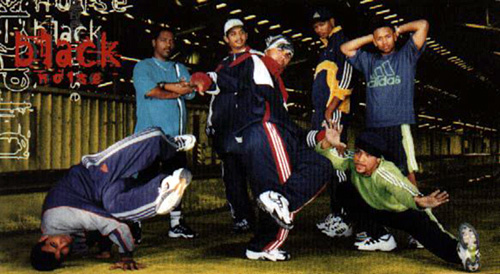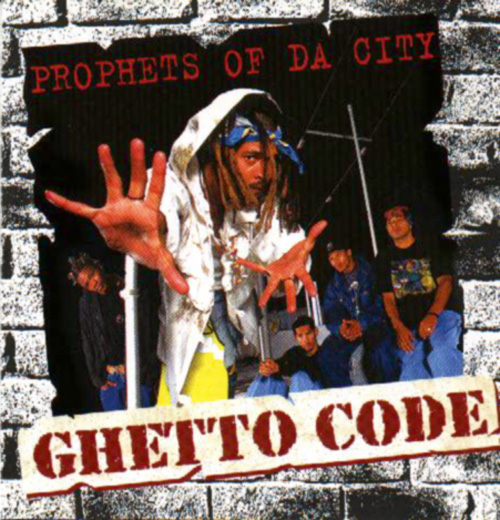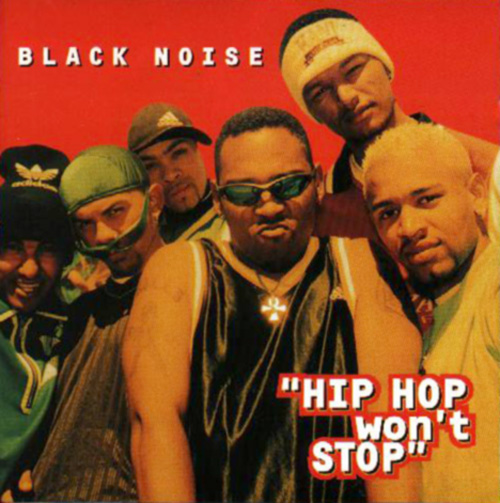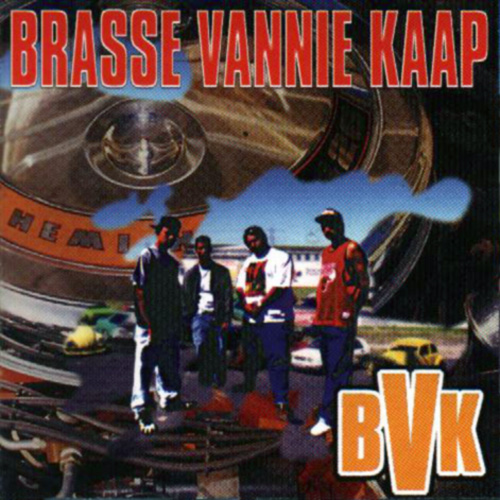(This article was originally published in 2002.)
Post-Apartheid South Africa as a crime and violence ridden society is still trying to overcome the racial-segregation and its discontents. Hip hop music of the early nineties represented by so-called gangsta rappers glorified a violent lifestyle. Both images can be found widely in the international media and in South African news papers as well. What they have in common is that they relate the ghetto life to a lifestyle of crime and violence. Hip hop music in this context is perceived as the sound track of an environment of violence, dictating every aspect of growing-up and socialisation.
Just as this concept of the violated South African society, especially in townships, is well-known outside the country, the international perception of rap music has reached South Africa as well. Gang warfare’s and ghetto crime’s global fame is due to its articulation within rap music. But it is not only restricted to US inner city ghettos. One can find this as well in the townships of the urban South Africa. With the growing popularity of US-hip hop, e.g. gangsta rap, the youth in the townships allegedly got something that they could relate to. On the other hand the public argued that rap music was not only a reflection of violence but also encouraged it.

As much as the image of the gangsta-rapper misses the reality, Cape Town’s hip hop artists are not a copy of this gangsta-image. The pioneers of hip hop were be found in Cape Town in the early 80s, long before the emergence of gangsta-rap and even before the commercial breakthrough of US- hip hop in the middle/late 80s. At a time when hip hop had its first peak and break-dancing movies became famous, Cape Town youngsters got into contact with the culture and its styles and aspects. These people came mostly from the Cape Flats, which might fit very well into the stereotype of a ghetto, and is still the home ground of the local scene. They taught themselves all the aspects of hip hop: mc-ing (rapping), dj-ing, break-dancing and graffiti art from films, books and records. Nowadays hip hop is publicly perceived as rap music (excluding break-dancing and graffiti art). The Cape Town hip hop pioneers practised all aspects of it.
Prophets of Da City

Cape Town’s most successful and popular bands are still incorporating all aspects of the culture into their practice. It goes alongside with their understanding of the real hip hop culture. The most popular bands are Prophets of Da City (POC) and Black Noise. Both are existing for about ten years. Especially POC can be seen as South Africa’s most successful and influential hip hop crew. They are the only band that has been internationally recognised. The band released 7 records so far and have been playing and touring overseas. Their music and especially their lyrics have always been controversial and therefore often fell under the censorship of the old South Africa. The Apartheid as well as its leftovers have been the core of their socio-political criticism. Besides that, their lyrics are about the township life, gangs, drug-abuse, as well as unemployment. But they are also articulating their criticism on the influence of US-mainstream hip hop on the local scene More recent social and political aspects are targeted, as well as Black-Consciousness is expressed. POC’s beyond mere music-making. They are playing a very active role within the hip hop community by teaching youngsters or giving them the opportunities to practice their talents. They are involved in different activities where they use their art form to inform people about their rights to vote or other socio-political issues. Their songs are written mostly in English and Afrikaans or more especially a Cape Flats slang that is frequently used.
Black Noise

Black Noise is existing as long as POC. They produced four records so far and are currently working on their next one. Their rapping is done mostly in English. Black Noise‘s self-definition is very much displayed in their name. They represent the Black-Consciousness fraction within Cape Town’s hip hop. The articulation of their identity as Africans, plays a major role in their lyrics as well as in their other activities. In their lyrics they emphasise on being Black. This contradicts the public perception, which is that they are coloured. This was a result of the Apartheid categorisation. By doing so they aim to uplift the self-esteem of Black and coloured people and breaking down the barriers between them. Dismantling the settings of the former South Africa and pointing out at its existing racism and effects, is part of this articulation of Black-Consciousness. Black Noise perceives themselves as an Old School hip hop band. Being active members of the South African branch of Afrika Bambataa’s Universal Zulu Nation also shows their understanding of real hip hop. Organist ion of South Africa’s annual Battle of the Year contest and the publishing of South Africa’s only hip hop magazine Da Juice, is mostly done by the oldest member of Black Noise, Emile XY?, with help from the others. Black Noise is involved in a lot of activities of social nature. They give work shops in community centres, libraries and prisons and tour schools to give their insight of South Africa from a more African perspective. To help on overcoming the after effects of the Apartheid is one of their major tasks.
Braase Vanni Kaap

More recently another band became successful. This is Braase Vanni Kaap (BVK) who came out with their first self-titled record in 1997. Two of their members, Ready D and Shaheen, are also with POC. Their most obvious difference to POC and Black Noise is that their rapping is done mostly in Afrikaans. In 2000 they released their second record Yskoud. BVK were quite successful with their first record. Their single FNTB (Fords, Nissans, Toyotas, Beetles) got good airplay on various radio stations. They played at a lot of festivals and in Belgium as well. Even at the festivals, with a mostly white crowd, their show has been very positively received.
Besides these bands there are many more active followers of hip hop in Cape Town. Many of them engage in rapping, some of them produce their own tapes or perform at free-styling sessions. Others are practicising break-dancing and participating in contests like the African Battle Cry that brings the best dancers to the international Battle of the Year in Germany. Others are doing spray-can art, which might be the most visible and predominant artistic expression of the hip hop culture. However, in my opinion, this is coherent in the nature of this practice. Spray-can artists prefer public places such as walls and buildings for their artwork, especially trains or train lines, so that their work is highly visible. If you travel by train in the direction of the southern suburbs you can see a lot of graffiti along your way. Spray-can art also finds some recognition in local newspapers which it is mostly described as a form of vandalism (except when the artist has already found the way out of the underground into commission work).
The two other hip hop forms of expression: the rap music and the break-dancing, are less visible. The break-dancing mostly happens in private, at workshops, during concerts and jams, as well as at special occasions like the African Battle Cry.
Cape Town’s rap music is not as recognisable as one could expect. Even the older and more successful bands are not getting that much airplay. It is even harder to get a record deal because local companies do not perceive local hip hop music as having purchase power. Not many bands are given the opportunity to produce a record or a tape. As far as I know only the above mentioned Cape Town hip hop bands have produced at least one CD. Whereas Brasse Vanni Kaap and POC have at least the backup of a record company, Black Noise is producing and financing their records by themselves.
Nevertheless rap music is the most acknowledged form of hip hop’s artistic expressions. In different magazines and newspapers, mostly the Mail&Guardian and the SL magazine, the scene and is concerts, festivals and workshops are featured.
Generally it can be said that a lot of people are aware of hip hop crews like POC, Black Noise, and Braase Vanni Kaap. As far as I could observe, the people who are interested in rap music know these bands,. But this does not mean that they are commercially successful. The hip hop followers, who are mostly quite young (between 15 and 20), listen and buy more US-hip hop than local material. They are attracted by more or less the same artists and records as young hip hop followers in the USA or Europe.
A main problem, that partly explains the lack of success of local hip hop, is the lack of support. Besides two clubs, Angels and the Jam, no other club plays rap music and especially not local material. Bush Radio, a community radio station has a hip hop show twice a week. These are presented and produced by local Cape Town hip hoppers, which are very often members of popular band like POC or BVK. These shows include live rapping and dj-ing. Information is given about the activities of the hip hop scene, for example, new recordings, tours, concerts, jam etc.. Besides Bush Radio only Radio Goodhope is covering local rap music.
The expression of Black Consciousness in rap lyrics is common in American hip hop. Amongst South African Coloureds this is unpopular. The most of them identify themselves purely as Coloureds and distinguish themselves from Blacks. Apartheid’s system of segregation placed people of different colour in a hierarchical order. coloured people were place above Blacks.
Black Noise, as well as POC are using Black Consciousness arguments.The great part of the hip hop community, especially the older ones agree with them. All the people of the hip hop scene, that I have spoken to, were part of the coloured community and would have been described as Coloureds by others. As far as I understood, all of these people identified themselves as Blacks and as Africans.
As much as US-rappers do not fit in the cliche of the violent gangsta, Cape Towns hip hoppers are not a copy of these stereotypes. Hip hop is a source of creativity and productivity. In general the public assumes a degree of destructiveness in hip hop. This assumption is not evident in the Cape Town hip hop scene. The hip hoppers are reflecting on and criticising through their practices post-Apartheid urban South Africa. A major topic in their lyrics, is the criticism of the existing racism between the different groups, as well as the euro-centrism. They are putting a lot of energy in uplifting the self-esteem of Blacks and Coloureds and in overcoming their prerogatives. These activities are going beyond the mere practise of hip hop. By dealing with African topics and emphasising their Africanness they are pointing out their own African hip hop. Even though they see themselves as part of the international hip hop community, they do not perceive their artistic expressions as a copy of US-rap music but as a unique South African product.
